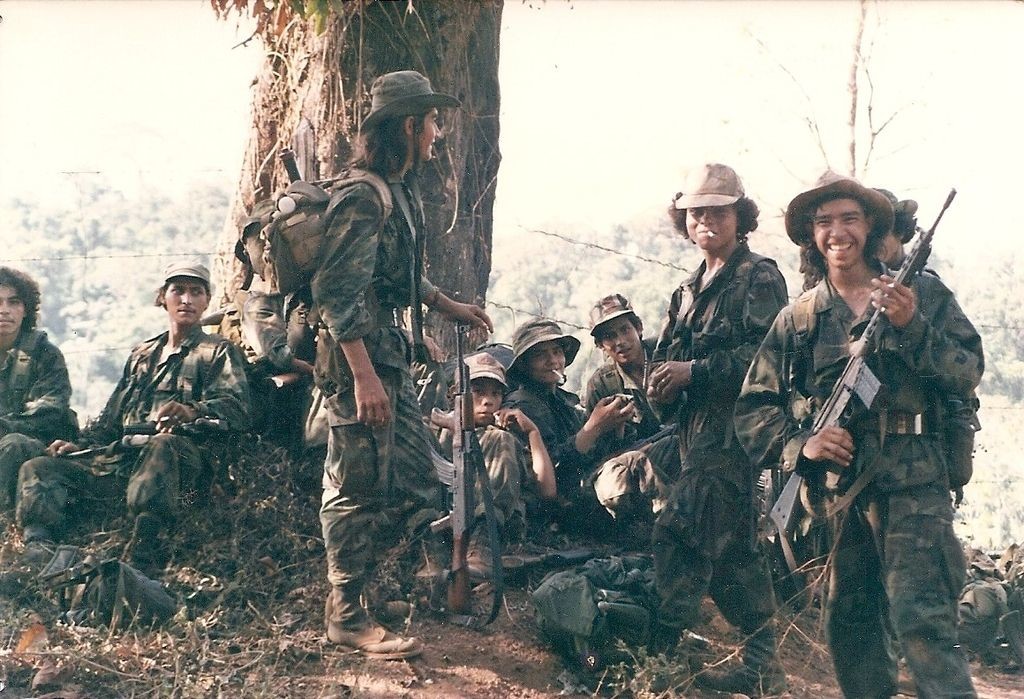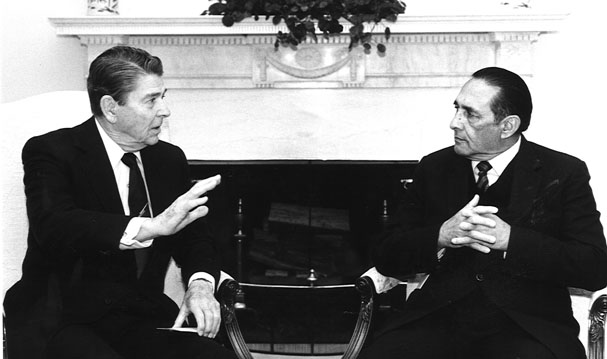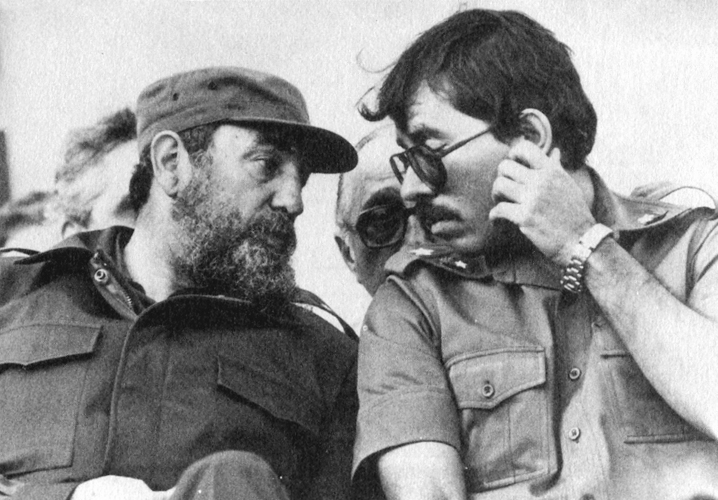America Did Hybrid Warfare Too

Vladimir Putin’s shrewd use of hybrid warfare to pursue Russia’s aims beyond its borders has unsettled the United States and Europe without provoking determined reaction. Nadia Schadlow’s perceptive commentary on the problem of hybrid warfare invites comparative reflection. She concludes,
In thinking through the ongoing competition with Russia, we must keep in mind that “hybrid” refers to the means, not to the principles, goals, or nature of war. There is nothing inherent about the concept that prevents this. Indeed, the Russians have it down. We do not.
As true as this rings, there is enough rhyme in recent history to remind us that it was not always so. The last time Russia and the United States grappled indirectly as adversaries in “the gray areas” during the final phase of the Cold War, it was the United States that put a hybrid “blend of military, economic, diplomatic, criminal, and informational means” to effective use, notably in Central America. Of course, there were important differences between the character of that confrontation and today, but much about the goals and the means were comparable, only it was the United States that seemed to “have it down.”
In the early 1980s, Central America had gone from backyard backwater to flash point in the Cold War. Walter Cronkite’s first question for President Ronald Reagan shortly after his inauguration was about El Salvador. Reagan reassured the American public that — less than a decade after the American tragedy in Vietnam — he had no intention of sending U.S. combat forces into a Central American quagmire. His administration then built on Jimmy Carter’s reactive stance to contain the spread of Cuban-inspired, Soviet-aligned revolutions from Nicaragua to El Salvador and beyond through a combination of measures. Some of them were prosaic, others unorthodox and controversial in the extreme. In El Salvador, light footprint counterinsurgency held off Latin America’s fiercest guerilla army while a democratic political strategy took hold. Covert action supported insurgents, the Nicaraguan Contras, who kept the Sandinista government off balance and mired in war. U.S. military forces on permanent exercise menaced from across the border in Honduras. Aid programs pumped U.S. dollars into the underdeveloped region. Desultory diplomatic negotiations mollified regional actors, allies, and the U.S. Congress. Information operations aimed at the homeland audience featured images of Soviet tanks headed toward Harlingen, the first American city at the southern tip of Texas.

The purpose of all this? Defending America from hostile foreign interference — the Monroe Doctrine. But it was also a “forward strategy for freedom,” as Secretary of State George Shultz called it, which above all served to demonstrate that America had revitalized its will to oppose the Soviet Union in the Cold War. Whether or not hybrid war as employed in Central America was a good thing or bad is a matter of political judgement. It associated the United States with unsavory allies and terrible human rights violations, while the misguided evasion of Congressional restrictions on covert action led to the Iran-Contra scandal that nearly wrecked the Reagan administration. Certainly the consequences of protracted war were very costly to the people of the region, even if they could be said to have benefitted from the advent of democracy. Objectively, the United States did achieve its stated aims, specifically containing the spread of leftist revolution elsewhere in Central America and reversing it in Nicaragua; lasting peace coincided with the end of the Cold War itself, but it cannot be said that the wars in Central America made any contribution to that outcome.
Employed as part of a broader strategy, what hybrid warfare did was allow the United States to carry out open-ended competition and signal certain confidence that the value of protecting the U.S. sphere of interest was greater than any opponent’s interest in upsetting it. After all, it would have served little purpose to test the escalation dominance the United States enjoyed in the hemisphere, say by threatening direct action against Cuba or rattling nuclear sabers. Instead, the method was a low-fear, low-cost, economy-of-force way to manage superpower confrontation that remained well below the threshold that might have provoked a more energetic response.

That the United States and NATO, a conventional defensive alliance, should be confounded by similar maneuvers on the part of Russia and left groping to “connect the dots” from Crimea to the Baltic is not a surprise. What should not be a matter for confusion is that hybrid warfare is not the exclusive province of a nefarious Putin, but rather a method available to any power with the motivation to employ it. This takes us only half way toward a solution. But, in paraphrase of Clausewitz, the first essential act of judgment is to establish the kind of war in which we are embroiled.
Todd Greentree is a former Foreign Service Officer who has served in five conflicts, most recently in Afghanistan. He is currently a Research Associate with the Oxford Changing Character of War Programme.
Photo credit: Tiomono (talk)

